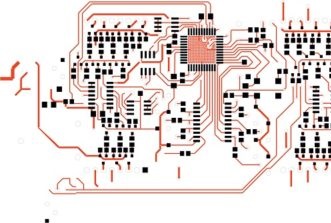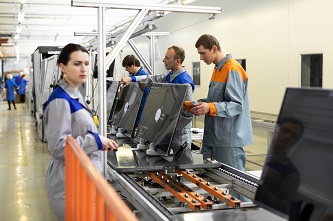This website uses cookies so that we can provide you with the best user experience possible. Cookie information is stored in your browser and performs functions such as recognising you when you return to our website and helping our team to understand which sections of the website you find most interesting and useful.
Aechelon launches Project Orbion: AI-enabled Earth digital twin
Aechelon Technology has teamed up with Niantic Spatial, ICEYE, BlackSky, and Distance Technologies to launch Project Orbion, the first AI-enabled digital twin of the Earth. The platform fuses satellite imagery, radar, video photogrammetry, and AI into a dynamic 3D model of the planet with real-time updates and physics-driven accuracy.
For eeNews Europe readers, the project is significant because it combines advanced sensing, visualization, and AI training tools into a single platform, opening new opportunities for defense, emergency response, and industrial applications. Moreover, it points to how simulation and AI validation are evolving beyond conventional maps and static datasets.
Synthetic Reality at the core
Project Orbion builds on Aechelon’s Synthetic Reality (SR) platform, which has been used for nearly three decades in pilot training, defense simulation, and mission rehearsal. Unlike conventional mapping or gaming engines, SR provides geo-specific, physics-driven realism that can integrate live sensor data.The digital twin supports scenarios ranging from disaster response and urban rescues to monitoring shipping lanes and military operations. Because SR incorporates data from multiple sensors, including radar, the system can penetrate darkness, clouds, and smoke, giving responders and defense agencies an up-to-date 3D picture of events on the ground.
“Aechelon has spent decades creating the most realistic synthetic environments for mission-critical defense training,” said Nacho Sanz-Pastor, Co-Founder and Chief Technology Officer of Aechelon. “The challenge has always been keeping pace with changes in the physical world and training humans and autonomous systems with realistic worldwide information. Our Skybeam™ product combines several innovative geospatial platforms with our own AI-driven, worldwide multi-sensor baseline to become a powerful new solution.”
Partners bring key capabilities
Niantic Spatial is contributing its geospatial reconstruction and visualization services, including a Visual Positioning System (VPS) that could enable ground teams to operate in GPS-denied environments. In particular, the VPS allows centimeter-level localization in areas where satellite signals are unavailable. “By combining our platform to scan, visualize and understand the world with Aechelon’s simulation technology, we can provide emergency and first responders the most accurate understanding of the environments in which they operate,” said Brian McClendon, CTO of Niantic Spatial.ICEYE brings its synthetic-aperture radar (SAR) constellation, which delivers imaging capability regardless of weather or lighting. “Aechelon began evaluating ICEYE SAR radar imagery from orbit by fusing the data 1:1 using its Skybeam platform to update their global geospatial database,” said Pekka Laurila, ICEYE’s Co-Founder and Chief Strategy Officer. “The goal was to penetrate clouds, adverse weather and smoke to ensure timely collection on the Earth for testing critical defense applications.”
BlackSky contributes high-resolution, high-cadence Earth observation imagery with AI-enabled analytics. “BlackSky’s AI-first approach carries immense value in informing a new world of AI-enabled real-time applications – digital twins, virtual and augmented reality – that increasingly moves at machine speed,” said Brian O’Toole, BlackSky CEO.
Distance Technologies is supplying its light field 3D display systems for aerospace simulation and defense training. “This collaboration has the potential to become the operating system for human AI interaction, enabling intuitive decision making and making autonomous AI systems safer – under control,” said Urho Konttori, CEO of Distance.
Beyond defense: AI training and dual-use potential
While the defense sector is the initial target, Project Orbion is also designed for corporations and civilian agencies. By integrating SR with real-world sensor data, organizations can train, fine-tune, and validate AI models with ground-truth information instead of purely synthetic datasets.That dual-use capability could be a game-changer in industries ranging from disaster management to logistics, and from smart cities to autonomous navigation. Aechelon and its partners position Orbion as more than a digital twin—it’s a foundation for AI systems that need reliable, real-time situational awareness of the Earth.














